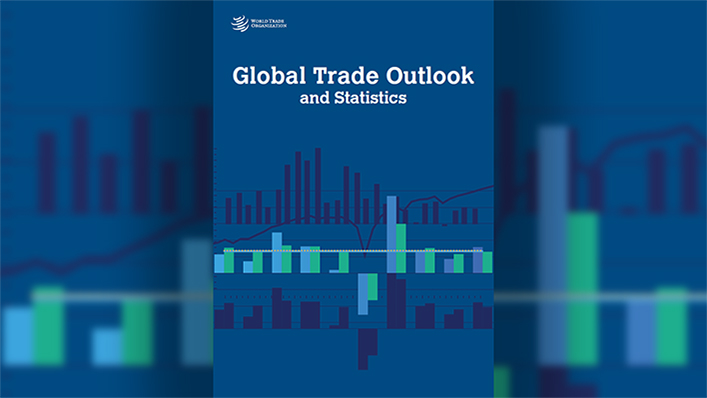Global Trade Outlook and Statistics - April 2024

Trade growth to pick up gradually in 2024 despite regional conflicts and geopolitical tensions.
World merchandise trade volume is expected to grow 2.6% in 2024 and 3.3% in 2025 as demand for traded goods rebounds following a contraction in 2023. Trade volume was down 1.2% last year after recording 3.0% expansion in 2022 despite the outbreak of war in Ukraine. The lingering effects of high energy prices and inflation weighed especially heavily on demand for trade-intensive manufactured goods, but this should recover gradually over the next two years as inflationary pressures ease and as real household incomes improve.
The relatively small 1.2% decline in merchandise trade in 2023 obscures strong regional variation, as import demand fell sharply in Europe, declined in North America, remained flat in Asia, and increased in major fuel-exporting economies. Weak demand
reduced export volumes in Europe and prevented a stronger recovery in Asia, while the picture in other regions was mixed. If the forecast is realized, Asia will make a bigger contribution to trade volume growth in 2024 and 2025.
As shown in Chart 1, merchandise trade volume was well above its pre-pandemic level throughout 2023 and was only down slightly in Q4 compared to the first quarter of 2022 (-0.6%). The peak in trade volume in the third quarter of 2022 could partly reflect the sharp increases in commodity prices that occurred during the year if these were not fully accounted for in trade statistics of reporting economies. Outside of this one period, trade can be seen as plateauing in 2023 rather than declining.
The current US dollar value of world merchandise trade (as measured by the average of exports and imports) was down 5% in 2023 to US$
24.01 trillion (see Appendix Tables 1-2). The decline on the export side was led by the Russian Federation, whose exports plunged 28%, as well as by manufacturing-oriented Asian economies, including China (-5%), Japan (-4%) and the Republic of Korea (-8%). Other major economies saw smaller declines or even modest increases, including the United States (-2%), Germany (+1%), and Mexico (+3%). Taken as a whole, the European Union’s exports to the rest of the world were up 2% while intra-EU trade was down 1%, leaving total exports flat in US dollar terms.
Meanwhile merchandise imports were down in most economies, partly due to falling prices for commodities such as natural gas, the price of which fell 63% on average in 2023. All major economies saw a decline except for a few large energy exporters, including the United Arab Emirates (+7%), the Russian Federation (+10%) and Saudi Arabia (+11%).
In contrast to merchandise trade, the US dollar value of world trade in commercial services was up 9% in 2023 to US$ 7.54 trillion as spending on travel and other services continued to recover from the COVID-19 pandemic. The increase in services trade party offset the contraction of goods trade in 2023, leaving world goods and commercial services exports on a balance of payments basis down just 2% in 2023 at US$ 30.8 trillion (see Chart 2).
World GDP growth also slowed in 2023, but not nearly as much as trade volume growth (see Chart 3). Real GDP growth (weighted at marked exchange rates) decreased to 2.7% in 2023 from 3.1% in the previous year. GDP growth is expected to remain mostly stable over the next two years, dipping to 2.6% in 2024 before returning to 2.7% in 2025.
There is a high degree of uncertainty associated with the current forecast due to the large number of risk factors present in the global economy, including regional conflicts, geopolitical tensions,

